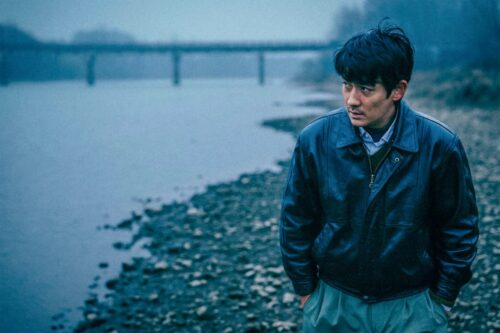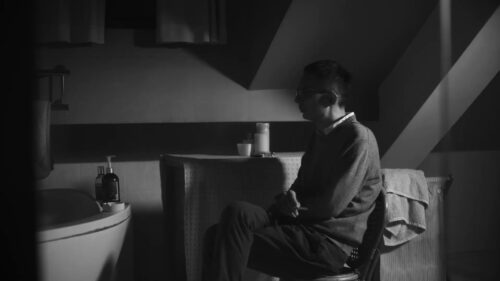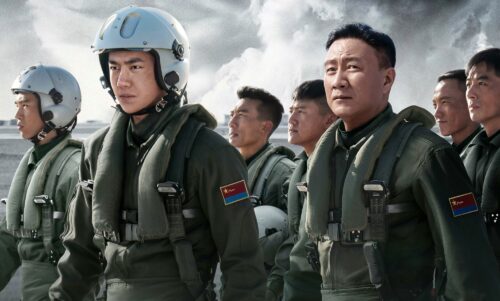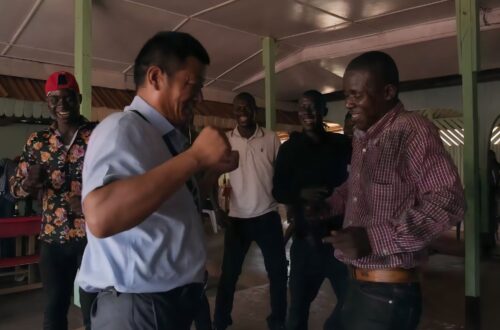China’s greatest propaganda film: Zhou Enlai’s historical musical ‘The East is Red’
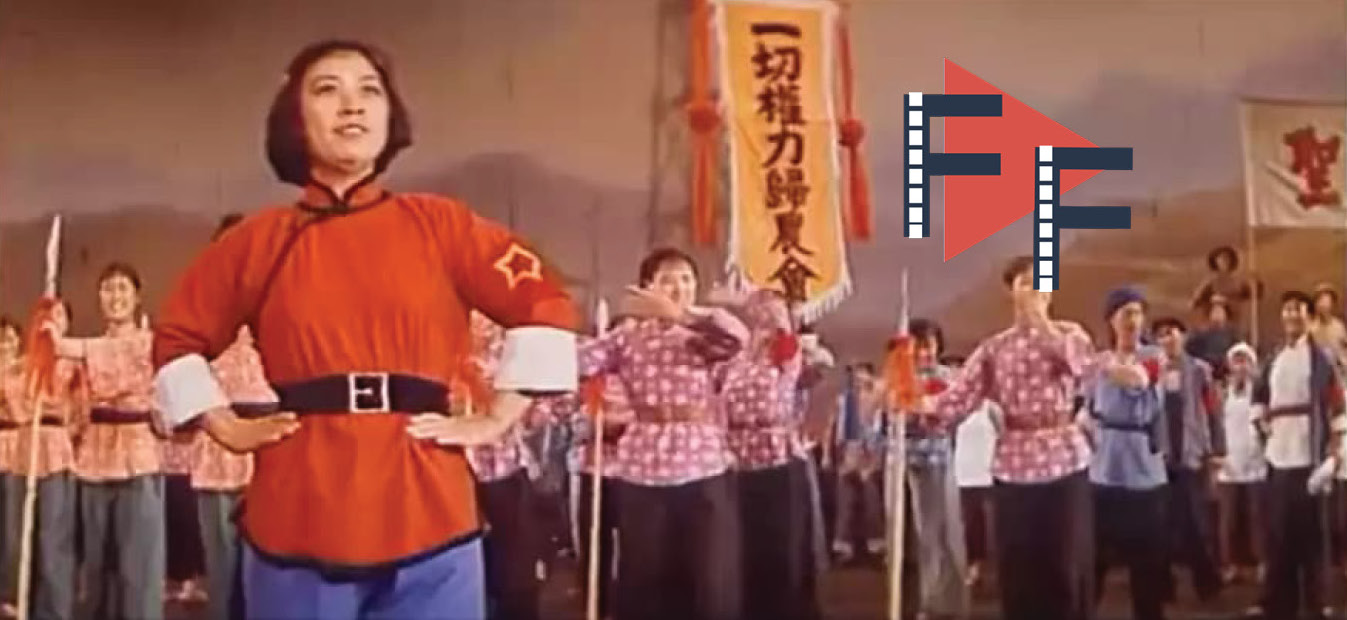
The story behind the Chinese Communist Party’s best propaganda musical.

Zhou Enlai 周恩来, the PRC’s first premier, is remembered fondly by many Chinese. He was Mao Zedong’s right-hand man and a skilled politician in his own right, often portrayed as modest, intelligent, and hard-working. Compared to Mao, he lived simply, and was never excessive in the political and social spheres. Zhou helped shape the history of modern China, but he also has a small, odd spot in the history of Chinese cinema. In 1965, Zhou supervised and produced The East is Red, a self-declared “song-and-dance epic” (音乐舞蹈史诗 yīnyuè wǔdǎo shǐshī) that renders the history of the CPC as a propaganda musical.
The origins of this peculiar mash-up can be traced to Liu Yalou 刘亚楼, the first commander-in-chief of the PLA’s Air Force. When Liu traveled to North Korea in 1960, he was treated to a massive musical performance by the Korean People’s Army. Liu was struck by the sight of more than 3,000 dancers and singers performing, and after watching a show of revolutionary songs in China, thought about combining the two ideas. He suggested that the Air Force’s performing troupe do something about it, and the result was Performing and Singing Revolutionary History Songs (革命历史歌曲表演唱 gémìng lìshǐ gēqǔ biǎoyǎnchàng), a stage musical about the history of the CPC.
When it premiered in Beijing in August 1961, the musical was quite popular, attracting tens of thousands of viewers. Another song-and-dance epic, Growing Under the Banner of Mao Zedong (在毛泽东旗帜下高歌猛进 zài máozédōng qízhì xià gāogēměngjìn), played to similar success among Shanghai audiences in the summer of 1964. After seeing a performance of the musical in July, Zhou Enlai made proposals to other CCP leaders about making a song-and-dance epic for the 50th anniversary of National Day. Zhou envisioned something that would glorify the CPC, and most importantly, Mao. His proposal was approved, and Under the Banner was revised and renamed The East is Red. (Party leaders apparently thought the original name was too long.)
With National Day only three months away, the production of The East is Red quickly went to work. Some of the actors from Under the Banner were recruited, and others were pulled from military acting troupes and Beijing art groups. Ultimately, more than 3,000 people were involved in the show, including a chorus of a thousand singers. It was an ambitious and doubtlessly stressful undertaking, but Zhou had the backs of everyone involved. He was heavily involved in the production, doing everything from suggesting story ideas to overseeing rehearsals in the middle of the night. The participants greatly appreciated his oversight, and one singer later even credited Zhou as the director, saying “He is the greatest leader in our history.”
Despite its rushed production, the stage version of The East is Red stunned many audience members when it premiered on October 1, 1964. Mao Zedong attended a performance himself, and it was Mao rather than Zhou who was credited in the press as its creator. Not long after the opera’s premiere, Zhou contemplated turning it into a film. During a meeting with Jiang Qing 江青 and the vice minister of culture, Jiang was opposed to adapting the musical on political and aesthetic grounds. Still, Zhou persisted, and three movie companies came together to film it. Wang Ping 王苹, one of the earliest female Chinese directors, co-directed the adaptation with filmmaker Li Enjie 李恩杰. As with the stage version, Zhou played a large role in the film’s production.
The movie version of The East is Red is a filmed adaptation of a stage performance, although the two versions aren’t entirely similar. Some scenes from the stage were cut, but all six of the story’s main sections do appear, each of them depicting the history of the Communist Party. In the opening scene, Chinese workers rebel against a European-looking man with a whip, symbolizing opposition to Western imperialism. The founding of the CCP leads to a dramatization of the Guomindang’s massacre of Shanghai Communists, then the Communists’ reprisal in the Nanchang Uprising. The other key events are just as what you’d expect, with the Long March, the Second Sino-Japanese War, and the end of the Chinese Civil War making appearances.
As a propaganda piece, there are a few parts that are unintentionally absurd and campy. Choruses sing of the “endless kindness” of the Communist Party, PLA soldiers do backflips to scare off Nationalist forces, and images of Marx, Lenin, and Mao all appear in the sky to be hailed by the common people. The enemies are cartoonish, and a narrator outright compares a final fight between the Communists and Nationalists as the battle between “light and darkness.” Unlike your typical propaganda flick, however, The East is Red has a high degree of artistic quality. There are senses of unity and energy to the film that make it strangely compelling.
One of the most interesting features about the film is that there aren’t any main characters. The stars of the show are the crowds of ordinary peasants, workers, and soldiers. None of these people are given names, and they only communicate via their movements and songs. While there are two narrators who show up every now and then to comment on the action, the plot is mostly told through the music and imagery. This lack of dialogue, along with the pantomiming and exaggerated acting, gives The East is Red the feeling of a silent film.
The music is made up of older patriotic and revolutionary songs, utilizing familiar pieces like Nanniwan 南泥湾 and March of the Volunteers 义勇军进行曲. (The titular song of The East is Red actually replaced the latter as China’s national anthem for a time during the Cultural Revolution.) The choreography is also “epic” in every sense of the word. While there definitely weren’t 3,000 performers involved this time, there are some huge, impressive set pieces on display. The opening, in which a group of blue-clad women twirl yellow fans and create a giant sunflower, is absolutely beautiful. The battles, with their twirling guns, swords, and flags, make for an unexpected delight as well.
For all the one-dimensionality of its message, the film adaptation of The East is Red is an aesthetic and technical marvel. Zhou Enlai and his vast crowd of collaborators created a piece of propaganda with a surprising amount of artistic merit, and the amounts of care, energy, and skill put into it clearly shine. If you can ignore its blatant bias, The East is Red is watchable on YouTube (embed above), and downloaded from the Internet Archive here.
Film Friday is The China Project’s film recommendation column. Have a recommendation? Get in touch: editors@thechinaproject.com
